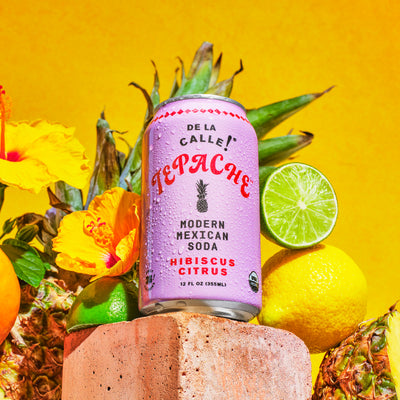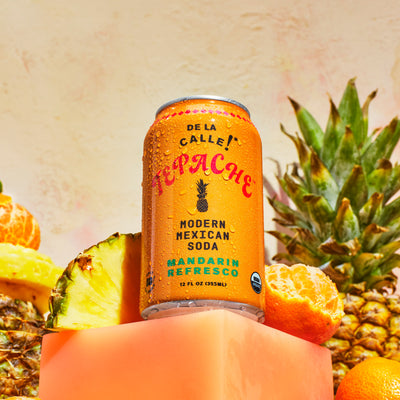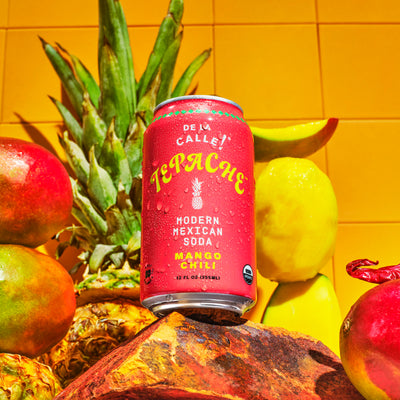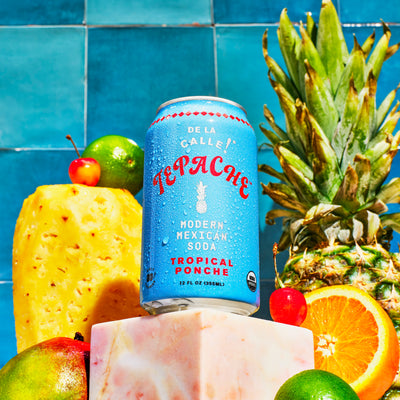What is Tamarind? 5 Recipes with Tamarind Paste

While you might recognize the flavor of tamarind paste in some of your favorite dishes from India and Latin America, you might be at a loss for how to incorporate tamarind paste into your own home-cooked meals.
In this article, we give you an overview of tamarind paste and then take a look at five recipes that utilize this versatile, delicious paste.
What is Tamarind Paste?
Before we get to the recipes, let’s take a closer look at what tamarind paste is and how it is made.
Tamarind paste is made from the pods of the tamarind tree. Inside each pod there are seeds surrounded by pulp. To make the paste, the pulp is extracted from each pod and separated from the seeds.
Although the tamarind tree is native to Africa, it currently grows all over Asia and Mexico and is an integral part of the cuisines in all three regions. In Asian dishes, it is often used to flavor noodles, curries, sauces, and soups.
That being said, tamarind paste also pairs well with meat and tastes delicious in desserts and cocktails.
Flavor
Tamarind has a distinct sour taste with a citrus-like twist. There are undertones of a smoky caramel flavor as well which make this paste a powerful presence in many dishes.
Given that it is a paste, tamarind in this form has a thick, sticky consistency.
Nutritional Value
Tamarind paste is incredibly nutritious seeing as the fruit contains high levels of vitamin B and C. It is also rich in nutrients such as potassium, iron, and phosphorus.
Many people also use tamarind as a natural remedy for ailments such as fever, sore throat, and digestion problems.
Cooking with Tamarind Paste
When cooking with tamarind paste, it’s important to remember that the paste is naturally very sour.
For this reason, you must add sugar or another type of sweetener (such as honey, agave, or erythritol) to your recipe in order to balance out the sour flavor of the paste. This will give any recipe a delicious, exciting sweet-and-sour flavor.
Given that each tamarind paste is slightly different, a good rule of thumb to remember is that runnier paste is generally less strong. So, if you buy a thinner paste, add more to the recipe to draw out the sour, citrus flavor of the tamarind.
Regardless of the type of tamarind paste you use, you can scoop it straight from the jar into your dish.
Recipe #1: Pad Thai
Pad thai is a delicious noodle stir-fry known for its peanut sauce and citrus kick. In order to make the best authentic pad thai at home, you’ll need tamarind paste. You can add any type of protein you want to pad thai, with chicken, shrimp, and tofu being the most popular.
To begin making pad thai you’ll first want to soak your rice noodles for anywhere from 30 to 60 minutes depending on the brand (make sure to read the packaging for the exact instructions). It’s important to use rice noodles when making pad thai because they give the dish a light texture and flavor.
To make the sauce, mix tamarind paste, vinegar, fish sauce, and either sugar or honey together over medium heat. Once the mixture is simmering, remove it from the heat. If you want to add a protein to your pad thai, prepare it once the noodles are soaking and the sauce is made.
Once the noodles, sauce, and protein are ready, heat oil and garlic in a wok. Scramble about four eggs in the oil and then add the noodles and protein. Once those are combined, add the sauce and more sugar or salt as necessary.
It will only take a few minutes for the noodles to finish cooking. Once they are done, add crushed peanuts. You can top your pad thai with bean sprouts, lime, and chives for additional flavor.
Recipe #2: Tamarind-Paste Glaze
Another great way to use tamarind paste is to turn it into a glaze. In order to use tamarind paste as a glaze, you must first mix it with a liquid to thin the texture. For sweet recipes such as pound cake or banana bread, both of which are excellent with a tamarind glaze, mix the paste with milk and sweeten it with sugar or honey.
For more savory dishes such as roasted vegetables, thin the tamarind paste with either water or chicken stock. When the vegetables are almost done, with about five minutes or so left, coat them with the tamarind glaze to give your vegetables a flavorful kick.
Recipe #3: Tamarind Cocktail
While tamarind paste is a versatile addition to many dishes, it also makes for the perfect secret ingredient in cocktails.
If you’re looking for an exciting new way to drink whiskey, consider making a tamarind and whiskey cocktail. Combine 3 tablespoons of bourbon with 2 tablespoons of lime juice and tamarind paste diluted with water. Add sugar or simple syrup as necessary and serve over ice for a refreshing, citrus cocktail.
Recipe #4: Curry
One of the more popular uses of tamarind paste in Indian cuisine is as an ingredient in curry. Although there are several different variations of curry, the basic sauce includes onions, tomatoes, garlic paste, ginger paste, and the following spices: coriander, cumin, turmeric, red chili powder, garam masala powder.
To give your curry a richer flavor, add a few tablespoons of tamarind paste to the mixture before adding your protein and serving over rice.
Recipe #5: Tamarind Marinade
Given that tamarind paste is acidic, it works well in marinades and produces incredibly tender meat, especially when used with tougher cuts of beef. Tamarind paste pairs well with savory flavors such as garlic, peanut, and soy sauce as well as sweet flavors such as pomegranate, orange, and lemon in marinades.
For white meat such as chicken, mixing tamarind paste with other citrus fruits makes for delicious grilled meat. Red meat such as beef works well with richer, more savory tamarind marinades.
Where Can I Buy Tamarind Paste?
Tamarind paste is sold either in a glass jar or a plastic container. If it’s not available at your local grocery store, the best place to find tamarind paste is either at an Asian or Indian grocer or online. Keep in mind that one jar of tamarind paste can last for a long time (several months if stored correctly), so there’s no need to buy in bulk if you’re just using it at home.
If you’re looking for a bit of a culinary challenge, you can also make your own tamarind paste! In order to make this tasty paste, you simply need to buy dried tamarind pods and remove the fruit. From there, you simmer the fruit with water and put it through a sieve to extract the paste.
Substitutions
If for some reason you cannot find tamarind paste but are in a pinch, there are a few substitutes if your recipe calls for a small amount of tamarind paste. You can substitute 1 tablespoon of tamarind pate with 1 tablespoon of vinegar and 1 tablespoon of brown sugar. You can also substitute tamarind paste with lime juice using a 2:1 ratio for lime juice to tamarind paste.
That being said, given that the flavor of tamarind paste is so distinct, substitutions are tricky for recipes that revolve around the tamarind.
The Takeaway
Tamarind paste is a versatile, delicious ingredient to have around. It gives a sour, citrus flavor to marinades, glazes, cocktails, curries, and more popular dishes such as pad thai.
It’s relatively easy to find and, if you’re feeling adventurous, can even be made at home!
Sources:
https://hort.purdue.edu/newcrop/morton/tamarind.html
https://www.healthline.com/health/food-nutrition/vitamin-b-complex












